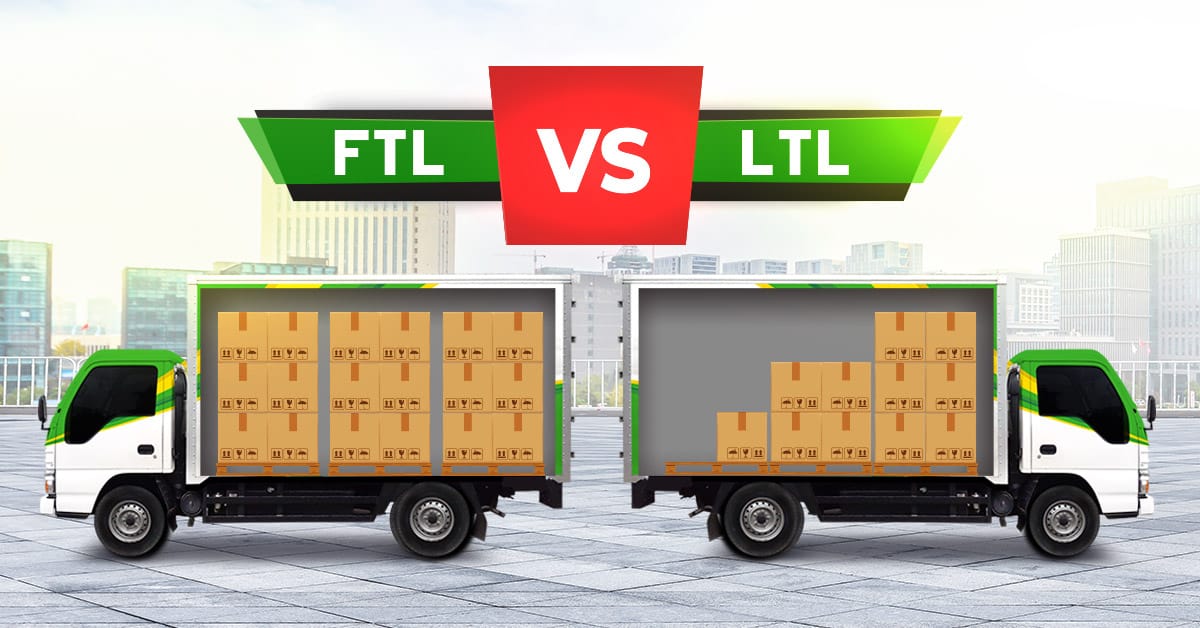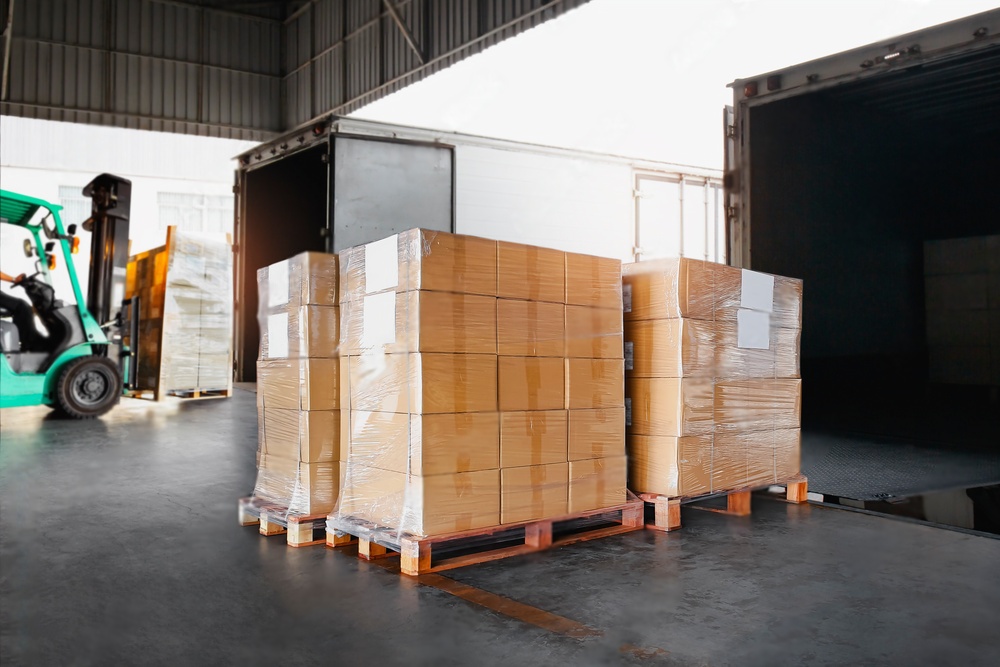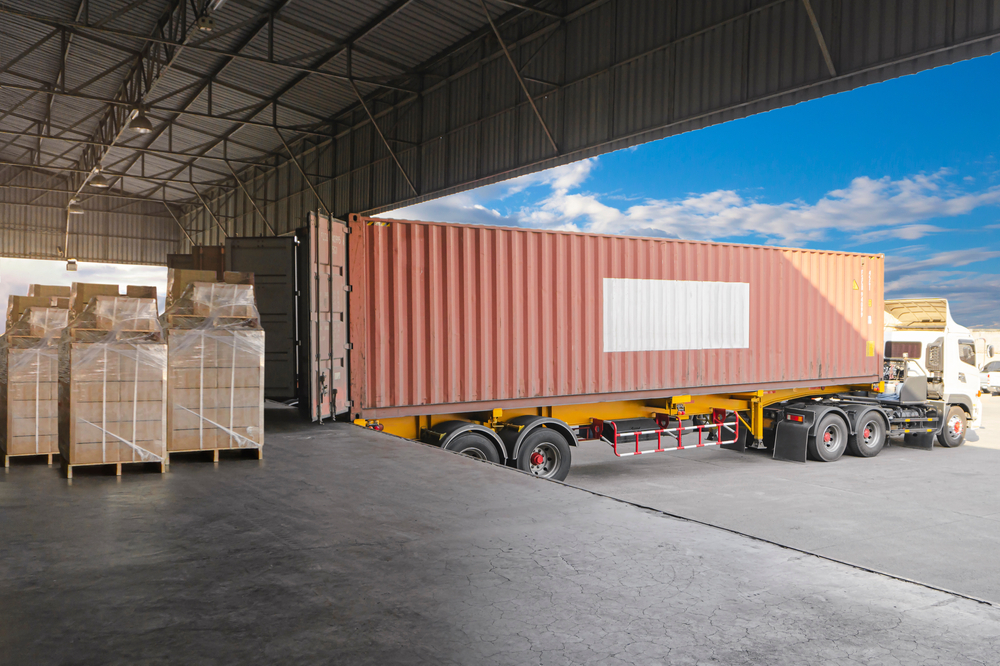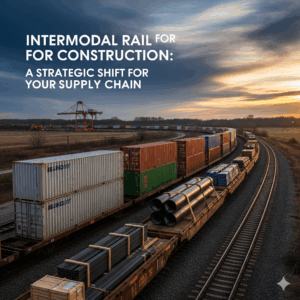In the ever-evolving world of logistics, Less-Than-Truckload (LTL) shipping remains a cornerstone for businesses of all sizes looking to optimize transportation costs, improve delivery efficiency, and scale operations strategically. As we step deeper into 2024, the LTL shipping landscape has transformed significantly – driven by technological advancements, shifting consumer expectations, and supply chain reconfigurations following global disruptions.
This LTL shipping guide offers a comprehensive, up-to-date breakdown of what LTL shipping is, how it works, and why it’s more relevant than ever for Canadian and North American businesses aiming to grow smarter and leaner in 2024. Whether you’re a small business shipping regionally or an enterprise looking to consolidate freight spending across the continent, understanding and implementing an optimized LTL freight strategy can make a measurable difference in your bottom line.
What Is LTL (Less-Than-Truckload) Shipping?
LTL shipping, or Less-Than-Truckload shipping, refers to the transportation of freight that doesn’t require a full truckload. Instead of paying for an entire trailer, businesses share space with shipments from other companies. This collaborative approach allows carriers to maximize capacity while offering shippers more affordable and flexible shipping options.Typically, LTL freight ranges from 150 to 15,000 pounds. If your shipments are too large for parcel delivery but not substantial enough to fill a truck, LTL is your go-to solution.

Why LTL Shipping Is Booming in 2024
Several trends are converging in 2024 that make LTL shipping a key logistical strategy:
- E-commerce growth: With online orders growing in volume and frequency, retailers are shipping smaller, more frequent loads to meet consumer demand. This aligns perfectly with LTL shipping models.
- Sustainability goals: Businesses are prioritizing eco-friendly shipping solutions. LTL shipping reduces the number of trucks on the road, lowering emissions and improving fuel efficiency.
- Cost control: With inflationary pressures and rising fuel costs, companies are under immense pressure to reduce logistics expenses. LTL freight services provide a scalable, cost-effective alternative to full truckload (FTL) shipping.
- Technology integration: Real-time tracking, AI-driven route optimization, and digital freight platforms are making LTL shipping faster, more transparent, and more reliable than ever.
Key Benefits of LTL Shipping
If you’re not yet leveraging LTL shipping, 2024 is the year to start. Here are the core benefits that make it such a powerful logistics solution:
1. Cost Savings
By sharing trailer space, you pay only for the portion of space your freight occupies. This reduces overhead and aligns freight costs with the actual size and weight of your shipments.
2. Flexibility
With LTL shipping, you’re not bound to high minimum volume thresholds. This gives you more freedom to ship as needed, rather than waiting until you’ve filled a full truckload.
3. Improved Inventory Management
LTL shipping supports just-in-time (JIT) inventory systems by allowing smaller, more frequent deliveries. This improves cash flow and reduces the risk of overstocking or stockouts.
4. Broader Reach
Most LTL carriers offer extensive terminal networks, allowing you to reach more destinations—especially across Canada and cross-border into the U.S.—without the complexity or cost of coordinating FTL logistics.
5. Environmental Impact
Fewer trucks on the road means lower emissions. In 2024, sustainability isn’t just a buzzword—it’s a requirement for doing business. LTL shipping helps businesses meet their ESG goals without sacrificing efficiency.
How LTL Shipping Works in Practice
The LTL shipping process involves several key steps:
- Pickup: Your freight is collected by a carrier or a third-party logistics provider (3PL).
- Sorting & Consolidation: Shipments from multiple customers are brought to a terminal where they’re sorted and consolidated based on their destinations.
- Linehaul: Consolidated freight is transported to the next terminal or directly to the destination region.
- Final Delivery: Once the freight reaches the terminal closest to its destination, it is loaded onto a final-mile delivery truck for drop-off.
Understanding this process helps you better plan for transit times, packaging requirements, and carrier selection.
Choosing the Right LTL Carrier in 2024
Not all LTL carriers are created equal. Selecting the right partner is essential for ensuring fast, damage-free deliveries and a positive customer experience. Here are factors to consider when choosing an LTL freight carrier in 2024:
- Transit times: How quickly can they deliver to your key markets?
- Service coverage: Do they reach all the areas your customers and partners operate in?
- Technology: Do they offer real-time tracking, digital BOLs, and automated rate quotes?
- Customer service: Responsive, knowledgeable support can save you countless hours and dollars.
- Damage rate: How often does freight arrive damaged or delayed?
Look for LTL carriers that have invested in digital logistics tools and offer value-added services such as liftgate delivery, inside pickup, or guaranteed delivery windows.
Best Practices for LTL Shipping in 2024
To get the most from LTL freight, follow these proven best practices:
1. Package Properly
Use pallets and shrink wrap to stabilize freight. Proper packaging reduces the chance of damage and makes loading/unloading faster for the carrier.
2. Know Your Freight Class
Freight class affects your rate and carrier eligibility. Familiarize yourself with NMFC codes and choose the right class based on weight, density, stowability, and handling needs.
3. Use Freight Brokers or 3PLs
Third-party logistics providers can help you compare LTL shipping rates across multiple carriers, negotiate better deals, and offer consolidated billing and reporting.
4. Leverage Digital Freight Marketplaces
In 2024, many businesses are shifting to platforms that automate the LTL shipping process—from quote to delivery. These platforms offer transparency, speed, and often lower rates.
5. Schedule Strategically
Avoid peak days (usually Mondays and Fridays) when carrier demand spikes. Scheduling pickups mid-week can lead to faster transit times and better rates.
LTL Shipping vs. Other Freight Modes
LTL shipping offers a unique balance between parcel delivery and full truckload. Here’s a quick comparison:
| Mode | Ideal For | Pros | Cons |
| Parcel | Under 150 lbs | Fast, door-to-door | Costly at scale |
| LTL Shipping | 150–15,000 lbs | Cost-effective, scalable, green | Slightly longer transit times |
| FTL | Over 15,000 lbs | Direct delivery, faster | Expensive unless full load |
If your shipments regularly fall within the LTL weight range, switching from parcel or FTL to LTL shipping can generate significant cost and efficiency benefits.
Why LTL Shipping Is Used?
In the world of wholesale distribution, businesses wholesalers don’t wait for empty shelves before restocking. To avoid stockouts and potential lost sales, they frequently utilize LTL(Less-Than-Truckload) shipping for smaller quantities of goods.
While LTL(Less-Than-Truckload) might be slightly costlier and take a bit longer than a full truckload, it offers a crucial benefit: consistent product availability for customers in distant locations.
LTL service providers come in two flavors: specialized or national.
Specialized companies might focus on specific regions or markets, like urban areas within a certain state. National LTL companies, on the other hand, can transport goods across the entire country. Regardless of their reach, both types of providers combine shipments from multiple companies onto their trucks, a process known as assembly service.
This approach maximizes efficiency and reduces costs for everyone involved. However, LTL shipping is complex as it requires careful coordination and sophisticated logistics planning to be profitable.
Advanced information technology systems play a vital role in this process, ensuring smooth operations and allowing both LTL providers and their customers to track shipments effectively.
How does LTL(Less-Than-Truckload) Work?
How LTL shipping works depends on a few things: where your stuff is going from and to, how it’s packaged, how much there is, and its weight. Size also matters – trucks come in different sizes, so the amount they can hold changes too.
Generally, LTL is for shipments between 150 and 15,000 pounds (lighter stuff goes with regular mail or delivery companies). An LTL shipment typically takes up less than 24 feet of space on a truck trailer and is stacked on special wooden or plastic platforms called pallets. These pallets are usually 4 feet by 4 feet and for space saving (and safety!), individual boxes are often wrapped together into one big package.
LTL shipping works like a big transportation web. Local pick-up and drop-off points act like spokes that connect to central hubs. Trucks pick up your stuff from a local spot and take it to a hub, where it might get loaded onto another truck to get to its final destination.
An industry group called the National Motor Freight Traffic Association (NMFTA) helps set the standards for how things are packed, priced, and shipped for LTL across the country.
What Is LTL Pallet Shipping?
An LTL pallet is basically a wooden platform you stack boxes on to ship things. It’s like using a moving box, but way sturdier for big trucks! Most things that don’t fill a whole truck are shipped on these pallets to keep everything safe and organized.

LTL vs FTL Shipping
LTL (Less Than Truckload) and FTL (Full Truckload) are two different methods of shipping freight:
- LTL Shipping: This method efficiently transports smaller freight by consolidating shipments from multiple clients within a single truck. Ideal for small and medium businesses, it utilizes pallets for secure handling. Costs are based on the shipment’s dimensional weight and the item classification.
- FTL Shipping: This method is ideal for bulk freight that utilizes the entire capacity of a truck. This method offers dedicated space for a single client’s shipment, eliminating the need to share space with other cargo. As a result, FTL boasts fast delivery times as the truck travels directly to the destination, bypassing stops for additional pickups or deliveries.
Advantage And Disadvantage of LTL Shipping
The biggest advantage of LTL shipping is the cost. Here’s why: imagine a truck and several companies all need to send stuff to the same area. With LTL, they can all share the truck space, like carpooling!
This saves everyone money because each company only pays for the space their shipment takes up. Plus, unlike regular trucking, where prices change all the time, LTL has set rates thanks to the National Motor Freight Traffic Association (NMFTA).
The disadvantage of LTL is speed. It takes more time to plan, pack, and ship your things because you might need to wait for the truck to fill up. The truck might also make extra stops or take a longer route to drop off other people’s stuff before yours arrives.
This extra handling can also increase the chance of your things getting damaged or lost.
So When To Select LTL?
Need to ship something, but a full truck seems like overkill? LTL shipping could be your perfect match! Let’s explore when this cost-effective option makes the most sense for your needs:
- Small shipments: Got a bunch of stuff to send, but not enough to fill a whole truck? LTL is perfect! You share the truck with others, so you only pay for the space your things take up.
- Not in a rush? LTL is great for things that aren’t super urgent. Since they combine shipments, it might take a little longer than a direct delivery, but it’s more flexible.
- Staying local? LTL is a good option for sending things nearby, especially if it’s not going very far.
- Tight on space? If your business doesn’t have a lot of room to store things, LTL lets you ship smaller amounts more often, instead of needing a huge stockpile.
- Going green? LTL helps the environment by putting multiple shipments in one truck, which reduces pollution compared to lots of separate trucks.
- Keep in mind: LTL isn’t always the answer. If your stuff needs to get there super fast, requires special care, or is just massive, you might need a different option like express delivery or a full truckload shipment.
How To Save Money on LTL Shipping?
Want to save even more on LTL shipping? Here are 3 tricks:
- Team up with others! Partner with nearby businesses to share a truckload. Freight brokers can help you find companies to split costs with.
- Tech to the rescue! Look for LTL providers that use fancy computer programs to plan their routes. This saves them money, which they might pass on to you in the form of lower shipping costs.
- Bring in the experts! Hire a logistics company to negotiate with LTL carriers for you and use special software to find the best deals on shipping your stuff.
Other LTL Shipping Services
Got your LTL shipment all planned out? Great! But before you hit send, consider these additional LTL services that can take your shipping experience from good to great:
- Need your stuff there in a flash? Upgrade to expedited shipping! LTL offers expedited service to get it there quicker, like express mail for bigger things.
- Hauling a giant box and worried about unloading? Liftgate service is your friend! It’s like a small elevator that lowers your shipment down, perfect for deliveries without a fancy loading dock.
- Shipping to a remote location? Limited access delivery is for you. This helps with deliveries to places that big trucks might have trouble reaching, like campsites or construction zones.
- Want the carrier to bring it all the way in? Inside pickup and delivery means they’ll carry your shipment right inside your building, saving you the hassle!
Final Thoughts: Embracing LTL Shipping for Sustainable Business Growth in 2024
As we move further into 2024, one thing is clear: shipping and logistics are no longer just operational concerns—they are core to competitive business strategy. Whether you’re a small e-commerce startup or a large manufacturer moving freight across the continent, your approach to shipping directly impacts customer satisfaction, profit margins, and long-term scalability. And that’s where LTL shipping continues to stand out as one of the most powerful, cost-effective, and flexible logistics solutions available today.
In this guide, we’ve explored the definition, benefits, working process, and best practices of Less-Than-Truckload shipping—but now let’s take a moment to reflect on how to turn this information into action.
Reimagining Your Freight Strategy
Shipping isn’t just about moving products from point A to point B. It’s about doing so efficiently, reliably, and in a way that aligns with your business goals. In the past, many businesses defaulted to full truckload (FTL) shipping or relied heavily on small parcel carriers. While these methods still have their place, the rising cost of fuel, demand for faster delivery, and sustainability mandates have made LTL freight more valuable than ever.
LTL shipping allows your business to move smaller volumes more frequently, reducing excess inventory, controlling warehousing costs, and maintaining tighter delivery windows. The result? More agile operations and a better customer experience. For companies focused on growth, efficiency, and environmental responsibility, that’s a game-changing trifecta.
LTL and the Power of Smarter Scaling
One of the biggest advantages of LTL shipping in 2024 is that it supports scalable growth. Rather than over-investing in logistics infrastructure or tying up capital in bulk orders and large shipments, you can scale up or down as needed with LTL. That means greater flexibility to meet seasonal demand, explore new geographic markets, or pivot in response to customer trends.
For instance, if your business is expanding into new Canadian provinces or launching cross-border operations into the U.S., LTL allows you to test demand without committing to full truckloads. This “test and learn” approach is ideal for growing brands that want to be agile while controlling logistics spend.
Technology Is Supercharging LTL in 2024
Another reason LTL shipping is a smart move this year? Technology. From AI-powered route optimization and real-time shipment tracking to predictive analytics and digital freight marketplaces, tech is transforming how LTL is managed.
This evolution isn’t just about flashy dashboards—it’s about real, measurable outcomes. Today, businesses using LTL have access to:
- Real-time visibility into freight location and status
- Digital proof-of-delivery (POD) documentation
- Automated freight quotes and rate comparisons
- Optimized consolidation across shipping lanes
- Predictive tools for avoiding delays and disruptions
These technologies reduce human error, improve delivery precision, and offer a clearer understanding of cost per shipment—all of which contribute to smarter decision-making and stronger logistics ROI.
LTL Shipping and Sustainable Logistics
Sustainability is no longer optional. Consumers, partners, and investors alike expect businesses to take meaningful steps toward reducing their environmental impact. The good news? LTL shipping aligns well with green initiatives.
By consolidating shipments and maximizing trailer utilization, LTL reduces the number of trucks on the road. Fewer trucks mean less fuel consumed, lower greenhouse gas emissions, and a smaller carbon footprint overall.
Many LTL carriers have also begun investing in cleaner technologies—such as electric trucks, aerodynamic trailers, and optimized loading systems—which further reduce environmental impact. If your company has environmental, social, and governance (ESG) goals to meet, shifting a portion of your freight to LTL can be a measurable step in the right direction.
Preparing Your Team for LTL Success
Making the most of LTL shipping in 2024 doesn’t just require great carriers—it requires a well-informed team. From warehouse operations and procurement to customer service and finance, everyone needs to understand how LTL fits into your broader logistics strategy.
Here are a few internal initiatives to consider:
- Train warehouse staff on proper palletization and freight labeling to reduce damage and speed up handling.
- Educate customer service teams on realistic LTL transit times and delivery expectations so they can set accurate expectations.
- Work with finance and procurement to identify opportunities for savings through LTL shipment consolidation or mode shifting.
- Use data dashboards to track shipping performance, analyze cost-per-pound trends, and uncover inefficiencies.
Building organizational fluency around LTL freight turns it from a logistics function into a business-wide advantage.
LTL + Intermodal: A Smart Combination
For some shippers, the ultimate logistics strategy in 2024 involves combining LTL shipping with other freight modes—most notably intermodal rail. Intermodal freight, which leverages rail for long-haul transport combined with truck for first and last mile, offers significant cost savings and environmental benefits.
When paired with LTL, intermodal creates a powerful hybrid shipping model. You get the cost efficiency and sustainability of rail for longer distances, and the flexibility and reach of LTL for regional distribution. This approach is especially valuable for companies shipping within and across Canadian provinces or cross-border into the U.S.
If you’re shipping 500+ miles and looking to cut costs or reduce your carbon footprint, a custom LTL + intermodal solution could be the perfect answer.
Why RailGateway Should Be Your Go-To Shipping Partner
To fully capitalize on the power of LTL shipping in 2024, the right partnerships matter. That’s where RailGateway comes in.
At RailGateway, we specialize in helping Canadian businesses of all sizes unlock the full potential of LTL, intermodal, and hybrid freight strategies. Our deep expertise in rail shipping, combined with our network of trusted LTL carriers and technology platforms, allows us to deliver smarter, leaner, and more cost-effective logistics solutions tailored to your business needs.
Whether you’re a seasoned shipper looking to refine your operations or a growing company exploring freight options for the first time, our team is here to guide you every step of the way—from quote to delivery.
Here’s what you can expect when you partner with RailGateway:
- Access to top LTL carriers across Canada and the U.S.
- Competitive rates negotiated on your behalf
- Integrated intermodal and LTL solutions for longer hauls
- Personalized customer service and logistics consulting
- Real-time tracking and freight visibility tools
In short, we’re here to help you ship smarter, scale faster, and save more.
Start Shipping Smarter Today
The logistics challenges of 2024 require modern solutions – and LTL shipping is one of the most effective, scalable tools you can use to meet those challenges head-on. With the right planning, the right partnerships, and the right technology, you can transform your shipping operations from a cost center into a growth driver.
If you’re ready to streamline your freight strategy, reduce costs, and build a more sustainable shipping operation, now is the time to make LTL part of your long-term plan.
Visit railgateway.ca to explore how our tailored LTL and intermodal solutions can help your business prosper in 2024 and beyond.
Let’s build a logistics strategy that works as hard as you do.

FAQ’s
What Does LTL Mean In Shipping?
LTL shipping is for shipments that are too big for regular shipping but not big enough to fill an entire truck. These shipments are often combined with other shipments from different companies on the same truck.
Why Is It Called LTL?
Less-than-truckload (LTL) shipping, sometimes referred to as less-than-load, is a cost-effective method for transporting relatively modest quantities of freight. This service is offered by a wide range of providers, including both established national parcel carriers and specialized logistics companies.
What Is LTL And TL?
Picking the right shipping option for your business can be confusing! You might have seen “TL” and “LTL” before. TL stands for “Truckload,” which is like renting the whole truck for your giant shipment. LTL, on the other hand, means “Less Than Truckload.” This is perfect for smaller shipments where you share the truck with other businesses, making it a more cost-effective option!





